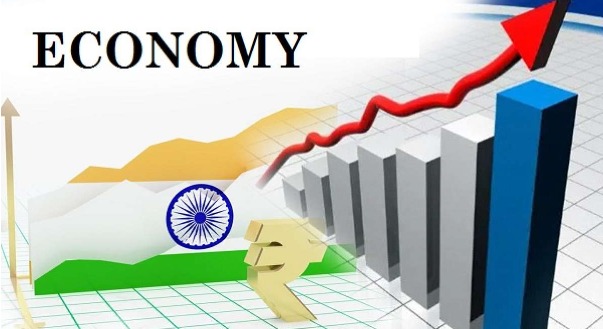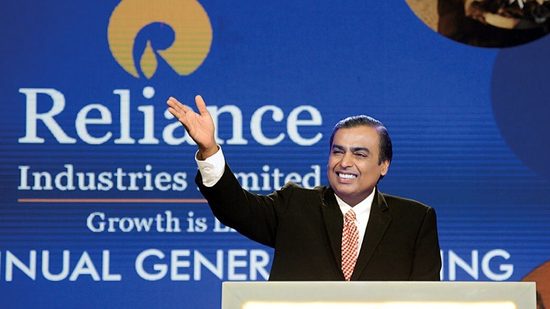
Indian economy in 2023 likely to be affected by global economic uncertainties like new Covid variants, ongoing geopolitical tensions and the fear of recession.
The world economy was starting to recover from the epidemic at the beginning of 2022. Supply chain delays, record-breaking commodity prices, and geopolitical concerns were all caused by Russia’s invasion of Ukraine. The Zero-Covid policy of strict lockdowns instituted by the Chinese government to suppress epidemics had additional effects on the world economy. The outlook for the global economy has gotten worse as a result of sanctions placed on Russia, and advanced economies are expected to slow down.
In response to prior market downturns, advanced nations immediately eased monetary policy, which acted as an antidote. This time, however, advanced economies won’t do so. As governments remove COVID support and increase interest rates to curb chronic, multi-decadal high inflation worldwide, we are coming off one of the most major tightenings in history.
A succession of rate increases that aren’t calibrated run the risk of slowing down economies’ economies. The Fed Funds Rate has undergone the most significant changes since 1981, the ECB Target Rate has undergone the most significant changes since the eurozone’s creation, and the global Central Bank Policy has undergone the broadest tightening since 1980.
Because inflation has been consistently exceeding predictions, the tightening has been quite pronounced. Due to investors’ obsession with interest rates, geopolitical unrest, and global uncertainty, the US dollar has seen record highs while other currencies have declined in value.
In the event that core inflation stays high, the US will see slower development, while Europe will experience a recession brought on by rising energy costs, and China will continue to be cautious and postpone its opening.
Real estate bubbles are developing in advanced economies as a result of increasing interest rates. The wealth of people declines as real estate bubbles pop, which results in reduced spending, which slows down these economies and affects imports from other nations. India’s non-oil exports in October were $25 billion, which was a decrease of 18% from the previous year and a reduction of 28% from the highest monthly goods exports of $34.7 billion.
In India, the service sector predominates, accounting for over 50% of gross value added, compared to less than 20% for manufacturing. The manufacturing sector is substantially more affected by global supply chain disruptions than the overall impact on the home economy, which is anticipated to be less. In FY23, domestic exports may be impacted by declining exports of a number of goods, including engineering goods, petroleum products, gems and jewellery, and textiles. India’s GDP will continue to be among the fastest-growing emerging economies and is predicted to increase by 6.8% in FY23. Exports account for less than a fifth of the domestic economy.
In contrast to the global trend, Indian equities markets are becoming less susceptible to Fed rate increases, US economic circumstances, and FII selling. Given that it imports more than three-fourths of its energy needs, India is susceptible to oil shocks. But because of its positive connection with Russia, India was able to reach a deal. It began importing more oil from Russia at affordable prices, which helped the country’s inflation rate drop in comparison to that of advanced economies.
Markets have held up well mostly because of the consistent domestic flows that indicate rising household equities exposure. The peak in interest rates for the US, India, and Dollar Index is anticipated for next year. In addition, the downturn in advanced economies will cause FII money to flow into emerging markets.
Due to structural variables including PLIs, FTAs, alternative technologies and fuels, local demand, favourable government policies, and strong balance sheets (BS) of consumers, corporations, and banks, which raise GDP, India has a better growth profile. In light of the global economic recession, domestic-focused industries are predicted to perform better in the short term than export-focused ones.
Since only 2% of world exports are currently from India, the country is actively pursuing PLI schemes and free trade agreements, and we anticipate that over the long term, these themes will fuel growth. Domestic markets are expected to be turbulent in the short term because India is in a pretty good position, supported by government initiatives, and experiencing growth in many sectors. The corporate earnings are still growing, and over the long run, the stock markets will follow suit and achieve new highs.
Other factors likely to affect indian economy in 2023-
1. US FED rate hike: The US Federal Reserve increased rates by 4.25 percent in 2022 following its most recent rate hike in December 2018 to curb inflation (see table). Although inflation has decreased to about 7%, the fight is far from done. Indicating that the rates will be “higher-for-longer,” Federal Reserve Chair Jerome Powell and Fed policymakers have been forthright about the need to combat inflation, even at the risk of sending the US economy into a downturn.
Rate increases in the US have a significant global influence. The majority of central banks have taken action to drain the preceding years’ record-breaking liquidity. The Bank of Japan’s decision to widen the yield range on the 10-year bond from 25 to 50 basis points jarred the world stock and debt markets and soured investor mood. The majority of indices finished the trading day in the red.
2. India’s exports may be hampered by global economic uncertainties-
India’s exports may have reached a record-high of $422 billion in 2021–2022, but a recession in important western markets and a geopolitical crisis brought on by the war in Russia and Ukraine are predicted to have a negative influence on the country’s rise in outbound shipments in 2023.
All of the elements that support global trade, such as political stability, the free flow of commodities, sufficient availability of shipping lanes and containers, demand, a stable currency, and efficient banking institutions, are in disarray.
The problems have been made worse by the recent resurgence of COVID cases in nations including China, Japan, South Korea, and the US.
The start of the Russia-Ukraine war in February badly interrupted global supply chains and raised prices for commodities before the COVID-affected economies could recover.
The war has also had an effect on the transportation of commodities along the crucial Black Sea route.
The World Trade Organization (WTO) predicted that global trade will only rise by 1% in 2023 in light of the deteriorating geopolitical scenario.
The international commerce is anticipated to slow down in the second half of 2022 and remain sluggish in 2023 as several shocks weigh on the world economy, according to the Geneva-based multilateral trade organisation.
“WTO analysts now expect that the volume of global merchandise trade would increase by 3.5 percent in 2022, which is a bit higher than the earlier forecast of 3 percent.
“For 2023, however, they predict a 1% increase—down significantly from the prior forecast of 3.4%,” it has been reported.
According to experts, it would be challenging for India to protect itself from the ominous events.
They did, however, note that India has so far controlled its export growth rate and that good development in services exports would also aid the nation’s overall outbound shipments in 2023.
Services exports reached a record high of $254 billion in 2021–22, and specialists in the field predict that they may reach $300 billion this fiscal year.
Exports increased by 2.14 percent, 1.62 percent, and 4.82 percent in July, August, and September of this year.
It experienced a 12.12% contraction in October and flat growth in November.
Exports increased by 11% from April to November 2022 to $295.26 billion from $265.77 billion during the same period in the previous year.
However, imports increased 29.5% to $493.61 billion over the first eight months of this fiscal year. During the months of April through November 2021, it was $381.17 billion, according to data from the trade ministry.
The ministry cites several factors, including the COVID and Russia-Ukraine conflict-related downturn in some developed economies, the ensuing slowdown in demand, and specific steps to control domestic inflation, as causes of the fall in merchandise exports.
The growing trade deficit (difference between imports and exports), which affects the value of the rupee and the current account deficit, will be the major issue for India.
In July, the merchandise trade imbalance increased to a new high of $30 billion. The value of the Indian rupee began to decline as a result of the escalating deficit and repeated interest rate increases by the US Federal Reserve, reaching an all-time low of 83 to the US dollar in October.
The rupee is currently trading just above 82.
According to Rumki Majumdar, an economist with Deloitte India, given the fundamentals of global trade, India’s exports are likely to decline, while the depreciation of the rupee versus the dollar may partially mitigate the effect.
“A devalued INR will be beneficial because more than 85% of commerce is conducted in US dollars.
“The government has launched a number of programmes that are helping to increase exports.
To increase efficiency, decrease delays, and lower trade costs, Majumdar stated, “last mile connectivity and logistics concerns must be solved.”
Despite the fact that the development of India’s share in global commerce may not be rapid,a source from MNS, declared that “we are bullish” on India’s exports for 2023.
“Yes, currency depreciation aids in boosting exports of some goods and services that do not rely on expensive imports of raw materials in the short term.
The incremental effect of the rupee’s depreciation on exports, according to the source, would gradually lessen as India shifts from being a services-driven export economy to one that exports goods.
The slowdown in global commerce to 1% in 2023, according to Director General of Federation of Indian Export Organisations (FIEO) Ajay Sahai, may negatively affect Indian exports as well.
“We are aware that our contribution to world commerce is still less than 2%, so the global trade graph shouldn’t have a greater impact on us.
Additionally, a few promising breakthroughs will benefit India in 2023, Sahai continued.
He claimed that the UAE and Australia’s recently concluded free trade agreements would be effectively utilised to boost exports in the coming months.
Additionally, new accords with the UK and Canada are anticipated in the first half of 2023 to provide exports a boost.
Regarding the depreciation of the rupee, Sahai stated that in the 52 weeks ending December 14 the local currency had lost 8% of its value, compared to losses of 8.3% for the Chinese Yuan, 15.7% for the Japanese Yen, 20.9% for the Pakistani Rupia, and 8.3% for the Argentina Peso (40.9 per cent).
The Indian economy will benefit from this in several ways, especially because our imports have increased by roughly 50%.
“Small currency fluctuation is excellent for exporters, but enormous volatility is risky and raises the cost of hedging as well,” he continued.
Although all the main economies of Europe, the US, and Japan are exhibiting signs of a recession, according to exporter and chairman of Technocraft Industries Sharda Kumar Saraf, based in Mumbai, India’s exports are still expected to expand by 8–10% in 2023.
The numerous Free Trade Agreements (FTAs) the government has struck with a number of important nations will serve as a catalyst, according to Saraf.
In order to increase exports and decrease the overall trade deficit, the government has implemented a number of policies, including the extension of the current foreign trade policy through March 31, 2023; the extension of the interest subsidy programme on pre- and post-shipment rupee export credit through March 31, 2024; and the implementation of the Remission of Duties and Taxes on Exported Products (RoDTEP) scheme beginning in January 2021.
Exports would be aided by the implementation of the production-linked incentive programme, the release of the logistics strategy, and the PM Gati Shakti project for integrated infrastructure development.
India’s progress: A half-full view
The majority of international institutions have recently reduced their predictions for India’s GDP growth through 2023. India is projected to grow between 6.5% and 6.9% in FY23, which is substantially stronger than other large economies and its peers in developing markets, despite the downgrades. India’s central bank decreased its growth prediction for FY23 from its earlier estimate of 7.8 percent in its February policy meeting to 6.8 percent at its most recent credit policy meeting in December.
Although the economy is still not growing, inflation is predicted to stay above the Reserve Bank of India’s objective of 4% in the upcoming year.
According to the research director of Motilal Oswal Financial Services, Gautam Duggad, this year’s interest rate increases by central banks throughout the world were the most pronounced in the previous 40 years. “Watching the struggle between central banks and financial markets, with the latter brushing aside the former’s moves, was fascinating. We anticipate that in CY23/FY24, growth problems will spread to India as well as the rest of the world, which will prevent rate increases and change the narrative, says Duggad.
India’s growth rate cycle has peaked, and a general slowdown is already under way, according to Nomura’s economists. The international trading business projects that GDP will drop from 6.8% in 2022 to 4.7 percent in 2019.
According to Bank of America, India is probably more resilient to a US recession. It implies that India’s GDP growth declines less, at -190 basis points against -280 basis points for the US, throughout the last three US recessionary cycles. According to its analysis, Indian markets outperform the US one year following the recession in terms of returns.
According to its analysts, India’s economic growth contraction lasts one to three quarters as opposed to two to seven quarters for the US, and the country recovers more quickly—in two to three quarters as opposed to three to eight quarters for the US.





